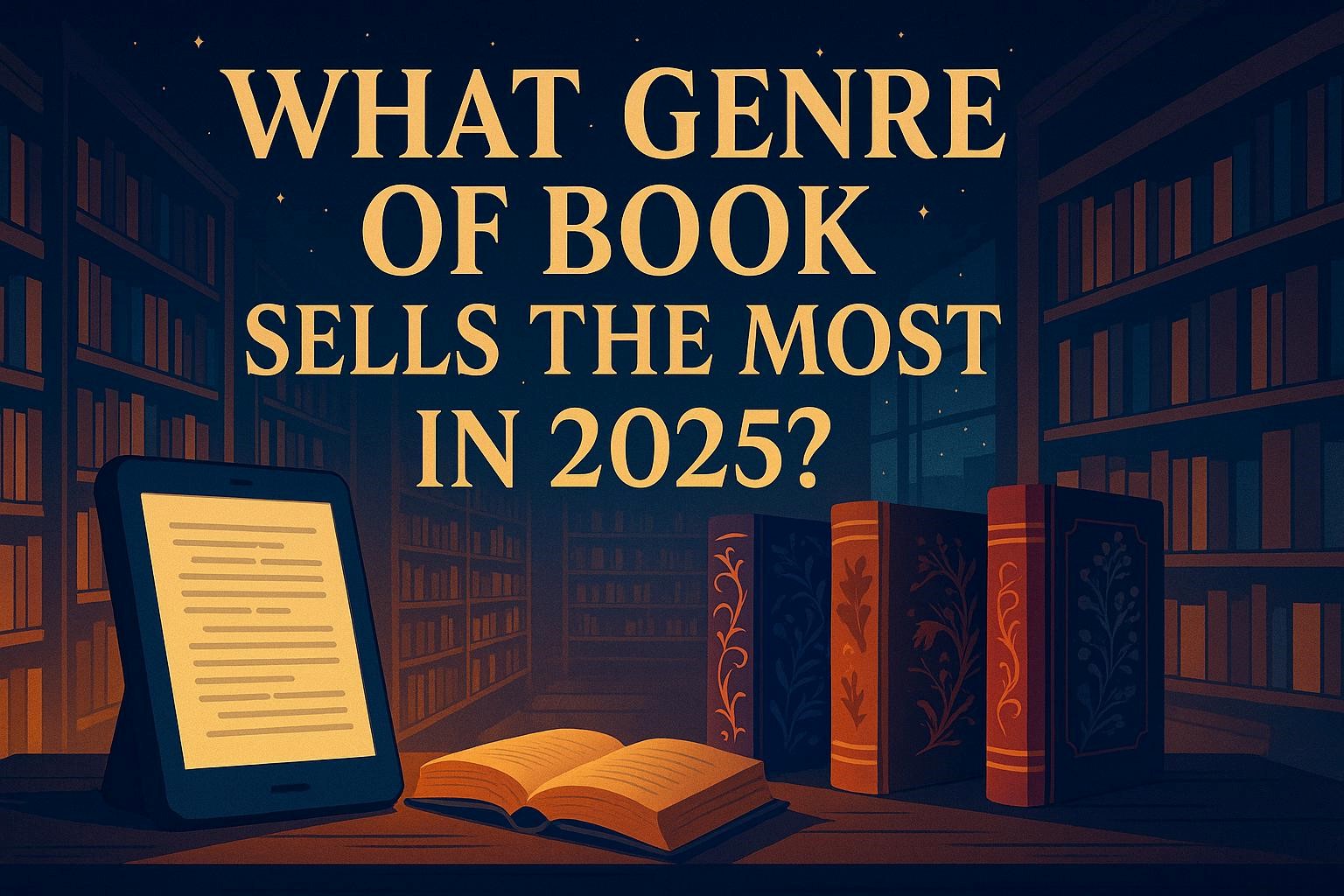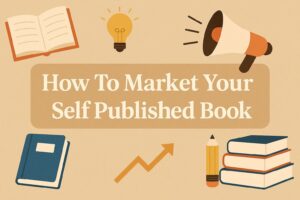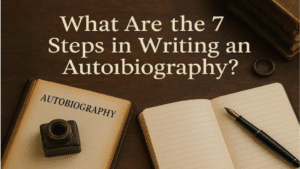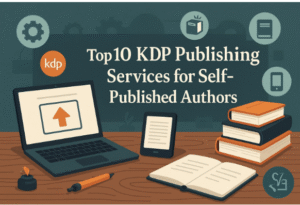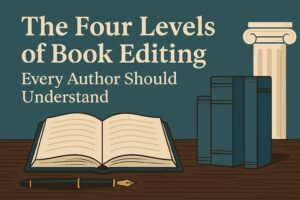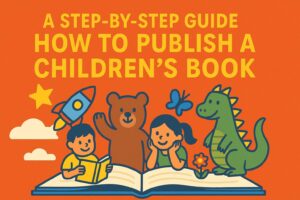Find out what readers are buying in 2025. From romance and romantasy to thrillers and fantasy, see the sales trends shaping the year’s best-selling book genres.
Introduction
The publishing world in 2025 feels like a storm you can’t quite predict. One viral video can launch an unknown author into orbit. Algorithms whisper in the ears of readers at midnight, pushing books they didn’t know they needed. Supply chains bend, print runs vanish overnight, and collectors queue for sprayed edges like they’re buying tickets to a concert.
And yet, amidst the chaos, one question keeps coming back. It’s in writers’ rooms, in publisher board meetings, in late-night indie forums: what is the best-selling book genre 2025 has crowned king?
It’s not just curiosity. It’s survival. If you’re an author planning your debut or a veteran trying to keep momentum, knowing where readers are flocking matters. Numbers don’t lie, but they don’t tell the whole story either. That’s why we’re pulling from hard data like Circana and NielsenIQ, indie-author sales surveys, and the ever-persistent hum of BookTok to sketch the clearest picture possible.
By the end, you’ll know which genres are soaring, which are dependable, and how to position your own book so it doesn’t just sell but thrives.
The Data Picture (What We Can Actually Measure)
If you want to know what is selling, you cannot rely on whispers or hype alone. You need numbers. Hard, measurable numbers. That is where Circana BookScan comes in.
What BookScan Tracks
BookScan records point-of-sale data from retailers across the United States. In other words, it shows which books people are actually carrying to the till and paying for. It is not an estimate. It is not guesswork. It is cash exchanged for stories. That is why publishers lean on it. It is the closest thing to a heartbeat monitor for the print market.
But it comes with limitations. BookScan covers physical print books only. No ebooks. No audiobooks. No Kindle Unlimited page reads. Which means if you stop there, you are only seeing part of the picture.
Setting the Baseline: 2024 into 2025
To understand 2025, you have to glance back at 2024. Fiction was already on the rise, with romance and romantasy leading the charge. Readers were not just dabbling in love stories and magical kingdoms, they were devouring them. That momentum carried over into the new year, stronger than ever.
Fantasy and thrillers also held steady in 2024, carving out their space on bestseller lists. When you stack those genres against 2025’s numbers, the growth is undeniable. These are not fads. They are waves building power.
Filling the Gaps with Indie Data
Here is the thing. The biggest blind spot in BookScan is digital. And in today’s market, digital is massive. Ebook-first authors, Kindle Unlimited exclusives, wide-distribution indies. These writers live in a world that BookScan simply does not count.
This is why indie-author surveys and sales reports matter. They capture the realities of platforms like Amazon, Kobo, Apple Books, and Audible. They reveal the genres readers binge late at night on their Kindle, the audio series they marathon on their commute, the subscription titles they borrow month after month.
When you combine BookScan’s print data with indie insights, you start to see the whole picture. Suddenly the shadows light up, and the contours of popular book genres 2025 emerge with clarity.
The Mosaic of Measurement
So what sells the most in 2025? Think of it as a mosaic, not a single snapshot. BookScan gives you the sturdy tiles of print. Indie surveys paint in the digital colours. Social media trends from BookTok, Bookstagram, and YouTube hauls add the sparkle. Together, they form a living portrait of the market, shifting and shimmering but impossible to ignore.
The 2025 Winners (by Demand Signal)
Now that the data picture is clearer, let’s talk about what it actually reveals. Which genres are dominating the charts in 2025? Which ones are readers not just sampling but buying in bulk, bingeing, and recommending to their friends? These are the genres that are not only trending but winning.
Romance and Romantasy: The Unstoppable Force
Romance has always been a giant in publishing, but in 2025 it is not just strong, it is unstoppable. Readers are hungry for happily-ever-afters, enemies-to-lovers arcs, slow burns, and epic declarations. Add fantasy to the mix and you get romantasy, a hybrid genre that has exploded into the spotlight.
The formula is irresistible. Readers get lush magical worlds, high-stakes conflict, and relationships that keep them turning pages late into the night. TikTok and Instagram feeds are packed with readers clutching hardbacks with sprayed edges, showing off special editions as if they are works of art. Collector culture is fuelling sales in ways that were almost unthinkable five years ago.
Romantasy is not just a trend, it is a cultural wave. If you are looking at the most profitable book genres, romance and romantasy sit right at the top. And with demand so high, even niche services like romance writing services are finding their place, helping new authors polish drafts and tap into tropes that readers cannot get enough of.
Fantasy: Beyond Escapism
Closely tied to the rise of romantasy is the resurgence of fantasy itself. Epic sagas, crossover young adult titles, and sprawling multi-book worlds are thriving. Readers are not content with a single adventure. They want series that span years, characters they can grow with, and worlds they can disappear into again and again.
Fantasy is also thriving in digital spaces. Kindle Unlimited subscribers love long-running sagas, and audiobook listeners flock to well-narrated epics that fill commutes and weekends. Authors who build immersive universes with irresistible hooks at the end of each volume are finding that readers follow them faithfully through entire series.
Thrillers, Suspense, and Crime: The Reliable Backbone
While romance and fantasy grab headlines, thrillers and crime novels remain the reliable backbone of the industry. They may not always go viral on TikTok, but they never leave the charts. Readers crave tension, mystery, and the adrenaline rush of a good twist. Domestic suspense has seen fresh growth, borrowing energy from the true-crime boom.
The strength of thrillers lies in their dependability. Readers know they will get a fast pace, a puzzle to solve, and a resolution that leaves them satisfied. For authors, that translates into a stable, evergreen market.
Science Fiction: Building New Frontiers
Science fiction holds its ground in 2025, particularly in space opera and near-future dystopias. The genre thrives on series economics. Once readers invest in book one, they often commit to the full journey. Sci-fi also excels in audio formats, with narration and production quality immersing listeners in worlds far beyond Earth.
The Runners-Up
Horror continues to find fresh energy, especially when fused with romance or mystery. Graphic novels and manga remain powerful contenders, boosted by younger readers and strong crossover appeal across print and digital platforms.
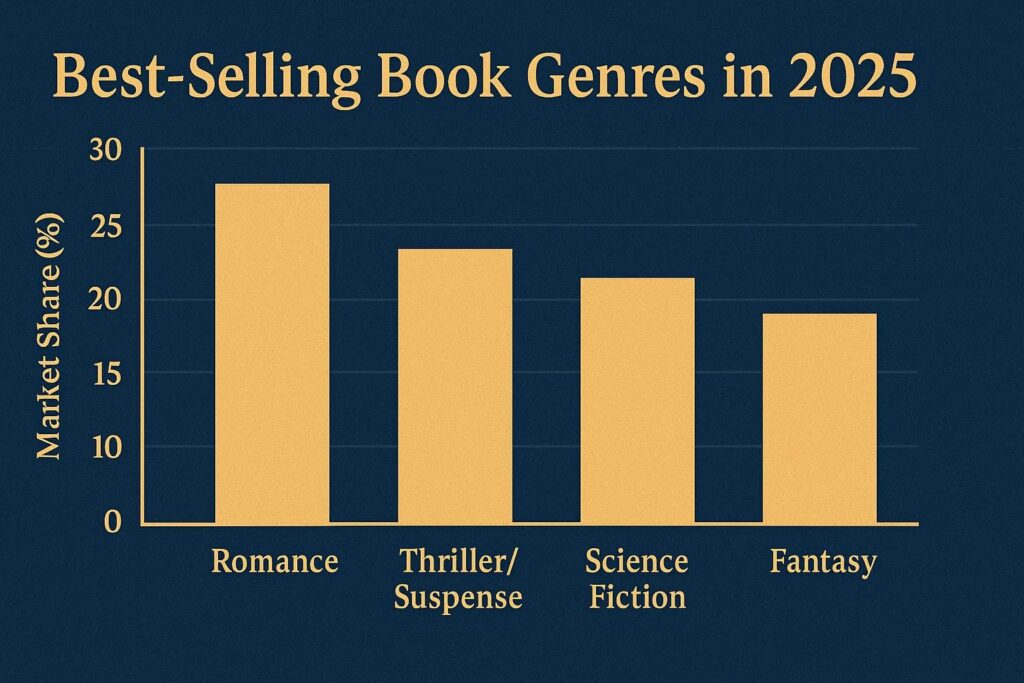
Why These Genres Win (Five Key Levers)
Numbers tell us what sells. The next question is why. Why do certain categories surge while others struggle for attention? In 2025 five big forces are shaping the winners. Understanding them can help you move from hopeful idea to market-ready book.
1. Algorithmic Discovery
Think of TikTok, Instagram Reels and YouTube Shorts as giant book clubs that never sleep. One catchy line read into a camera or one slow-motion clip of a beautiful cover can ignite thousands of instant purchases. Romance, romantasy and fantasy thrive here because their hooks are visual and emotional. A single viral post can carry an unknown author to bestseller status in days.
2. Series Economics and Reader Lifetime Value
Readers want more than a one-night stand with a story. They want to move in, stay a while and bring their friends. Series give them that. Each book becomes an invitation to keep reading, which turns every sale into a potential multi-book relationship. Genres built for sprawling story worlds such as fantasy, science fiction and thriller naturally take advantage of this dynamic.
3. Familiar Tropes and Community Loyalty
People return to what comforts them. Lovers of romance expect happily-ever-after. Thriller fans expect pulse-pounding suspense. Fantasy readers expect immersive worlds and chosen-one arcs. These tropes create trust. When done well they feel fresh, not tired. The genres dominating 2025 are those that deliver these expectations with style and small surprises, keeping readers both satisfied and curious.
4. Flexible Formats and Special Editions
Print is alive and dazzling. Illustrated romance covers, sprayed edges and deluxe hardbacks turn books into collectible art. Digital is booming too, especially audiobooks and subscription reads. The most agile authors plan for both. They release ebooks for instant reach, audiobooks for commuters and gym-goers, and physical editions for the fans who want to display a treasure. This format flexibility makes the best-selling book genres 2025 capable of reaching every kind of reader.
5. Strong Retail Shelf Presence
Despite the digital explosion, bookstores still set cultural cues. Big stacks at the entrance of a shop or a glowing staff-pick shelf signal quality and help new readers discover a series they might never search for online. Genres with consistent sales and recognisable branding such as romance, fantasy and thrillers earn and keep this premium shelf space.
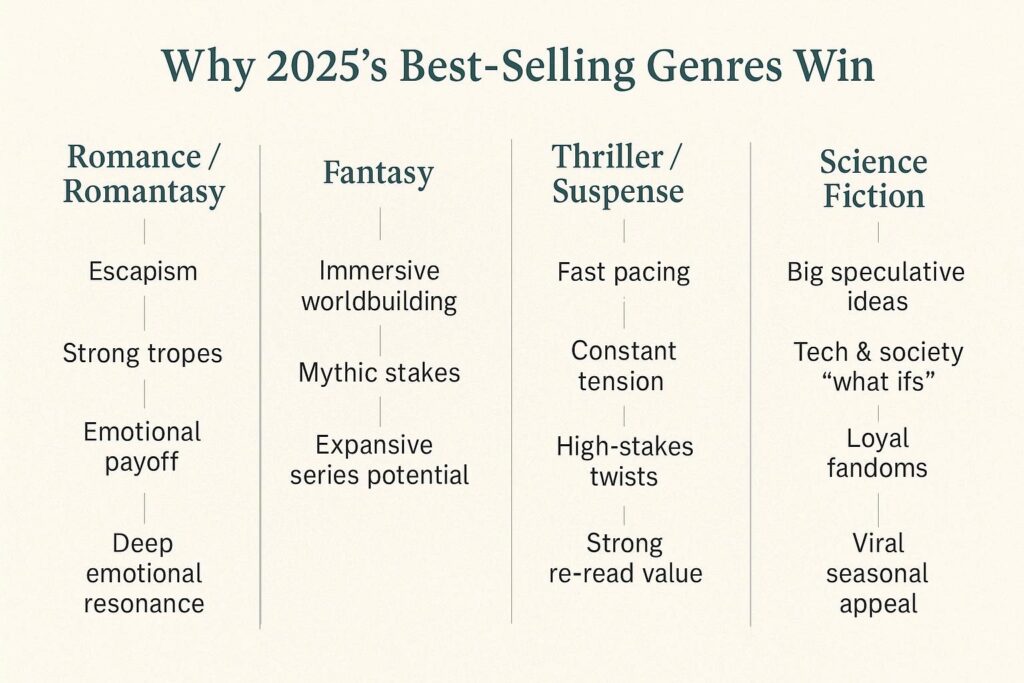
Putting the Levers Together
These five levers do more than explain isolated hits. They describe a system. Social algorithms ignite the spark. Series structures keep the fire burning. Tropes, flexible formats and retail presence feed oxygen. The result is a flywheel of discovery and loyalty that keeps romance, fantasy, thrillers and science fiction not just popular but powerful in 2025.
Traditional vs Indie: Where the Money Flows
Once you know which genres dominate, the real question is where the money ends up. Traditional publishing and indie publishing play by different rules, yet both feed into the same reader appetite.
Traditional Publishing: Big Bets on Big Names
Trade publishers operate on the blockbuster model. They invest heavily in a handful of titles each season and push them into the spotlight. In 2025 those titles are most often romance, romantasy and fantasy. Multi-book deals are common, with publishers imagining entire franchises from the start. Special editions, sprayed edges and film or TV rights are baked into the plan.
Thrillers and crime still receive steady attention. They may not explode like romantasy, but they are reliable and keep sales charts healthy. Science fiction gets support when it shows crossover potential, often linked to screen adaptations. Nonfiction continues to sell but rarely gets the same level of investment.
Indie Publishing: Speed and Connection
Indie authors thrive on agility. Instead of waiting for a huge marketing push, they publish fast, lean on community loyalty and use platforms like Kindle Unlimited to capture binge readers. Romance leads by far, with fantasy, sci-fi and thrillers close behind. Horror thrives in smaller but fiercely loyal circles.
Indie publishing is about consistency. Authors who release regularly and nurture direct contact through newsletters or Patreon build reader trust that pays long-term.
Shared Lessons
Despite the differences, the lines blur. Publishers watch indie hits for acquisition opportunities, while indie authors produce collector’s editions that rival the big houses. The overlap shows one truth. Romance, fantasy, thrillers and sci-fi are not only dominant but also the most resilient. They sit firmly at the heart of popular book genres 2025, whether backed by a corporate giant or a single determined writer.
Micro-Trends to Watch in 2025
Zoom in closer and you start to see the finer details shaping the year. Beneath the big winners like romance, fantasy and thrillers, there are micro-trends bubbling up and reshaping reader expectations. These smaller movements do not always dominate charts, but they influence how books are packaged, how they are marketed and how readers talk about them. Ignore them and you risk sounding out of step. Lean into them and you might ride the next viral wave.
Dark Academia
The aesthetic of moody libraries, elite schools and secret societies continues to grip younger readers. Dark academia combines intellectual curiosity with gothic undertones, pulling in fans who crave atmosphere and moral ambiguity. It overlaps with mystery and fantasy, making it a fertile playground for cross-genre experimentation. Authors who can weave rich settings with slow-burn tension are finding an eager audience.
Myth Retellings
Ancient stories are being reborn with fresh voices. Whether it is Greek mythology reimagined through modern eyes or folklore from underrepresented cultures stepping into the spotlight, readers are embracing the familiar made new. This trend taps into both nostalgia and discovery, offering comfort with a twist. Strong worldbuilding and emotional depth are the keys here.
Cozy and Mid-Stakes Fantasy
Not every reader wants an epic battle for the fate of the universe. Cozy fantasy, sometimes called mid-stakes fantasy, is finding its place among readers who prefer warmth to war. These are tales of small villages, tavern owners, wandering adventurers and found families. The stakes may be personal rather than apocalyptic, but the emotional pull is powerful. This trend reflects a desire for gentler escapism, especially during turbulent times. Fantasy writing services are apt at guiding you towards the exact kind of fantasy you want to write.
Domestic Suspense and True-Crime Adjacency
Thrillers are evolving too. Instead of sprawling conspiracies, readers are leaning into stories that hit closer to home. Suburban secrets, neighbourhood betrayals and psychological twists rooted in the everyday are pulling strong numbers. The influence of true-crime podcasts and documentaries is clear. Readers want to be unsettled by the possibility that something sinister could be happening just next door.
Why Micro-Trends Matter
These micro-trends may not dominate headline numbers, but they ripple through the entire market. They influence cover design, metadata choices, audiobook casting and social media marketing. They also open doors for authors who may not fit neatly into the largest categories. By watching these shifts closely, you can position yourself where reader curiosity is peaking.
And while romance, fantasy, thriller and science fiction remain the best-selling book genres 2025, it is these micro-trends that give authors the opportunity to stand out. Sometimes the biggest wins come not from following the crowd, but from catching the moment when a niche blossoms into a movement.
If You’re Choosing a Genre (Decision Framework)
Knowing which genres sell is one thing. Deciding which one you should actually write is another. Many new authors make the mistake of chasing trends without asking if those trends align with their voice, their interests or their ability to sustain a series. A smart approach combines market demand with personal fit. That balance is what turns a single book into a lasting career.
Step One: Market Demand vs Author Fit
Start by sketching a simple grid. On one axis, put market demand. On the other, put personal fit. High demand and high fit? That is your sweet spot. High demand and low fit? That is where burnout lives. Low demand and high fit? That is where passion projects belong. Low on both? Probably a dead end unless you enjoy writing purely for yourself.
This framework helps you resist the temptation to leap blindly into whatever is hot. Yes, romantasy is booming, but if you cannot stomach writing romance arcs, you will struggle to meet reader expectations.
Step Two: Tropes Heat Map
Every genre has its building blocks. Romance has happily-ever-after, enemies to lovers, fated mates. Fantasy has chosen ones, found families, morally grey mentors. Thrillers have unreliable narrators, ticking clocks, double-crosses. Draw up a “heat map” of tropes you enjoy writing versus tropes the market is hungry for. The overlap will show you where your best opportunities lie.
Step Three: Proof of Concept
Before investing months into drafting, test the concept. Ask yourself:
- What are the closest comparable titles? If you cannot name three, you may be missing the market.
- What promise are you making to the reader? Can you summarise the emotional journey in a sentence?
- Can this idea sustain more than one book? Series sell better, especially in digital-first publishing.
- Can you hook someone in ten words? That is how quickly attention is won or lost online.
These questions create a checklist that helps you filter out shaky ideas and focus on the ones with genuine market potential.
Step Four: Passion as Insurance
The market shifts. What feels fresh today may feel saturated tomorrow. The safeguard is passion. If you genuinely love the tropes and world you are building, you will keep writing even if the initial response is slow. Readers sense when a book is written with conviction rather than calculation. Passion keeps you in the game long enough to catch the next wave.
Step Five: Balance Profit and Purpose
It is tempting to treat writing only as a business. After all, the most profitable book genres are clear enough from the data. But if profit is your only compass, you risk hollowing out the joy that fuels creativity. The smartest path is to choose a genre where you can deliver what readers want while also enjoying the process. That is how you build both income and longevity.
Positioning and Packaging That Sells in 2025
You can have a great book and still watch it sink if the packaging does not match reader expectations. In 2025 the way you present your story is almost as important as the story itself. Positioning is how you tell readers what kind of journey they are about to take. Packaging is how you make it impossible for them to walk past without picking it up.
Covers That Speak
Covers are not decoration, they are signals. Illustrated romance art, bold fantasy landscapes, dark thriller minimalism. Each genre has a visual language readers recognise instantly. If your cover misses the signal, your book risks being invisible. Invest in design that matches the promise of your story.
Metadata That Works
On digital platforms, metadata is your shop window. Trope-based keywords like “enemies to lovers,” “cozy fantasy,” or “domestic suspense” ensure your book appears in the searches that matter. Subcategory placement is just as critical. Readers rarely browse broad categories like “fiction.” They browse the niches. Make sure your book is there waiting.
Formats That Multiply Value
Readers in 2025 want choice. Ebooks for instant access. Audiobooks for the gym, commutes or chores. Special-edition hardbacks for the shelf. If you are writing in one of the best-selling book genres 2025, consider layered releases. Digital first for reach, audio for loyalty, and collector’s editions to create excitement and scarcity.
Packaging sells the first copy. Positioning convinces the reader to click “buy.” Quality keeps them coming back. In 2025 those who master the combination are the ones building momentum, not just chasing it.
Marketing Playbook (Fast Wins)
You have the book. You have the packaging. Now you need readers to actually see it. In 2025 the rules of marketing move quickly. Attention spans are shorter, competition is louder and algorithms control much of the discovery. The good news is that you do not need a blockbuster budget to cut through the noise. What you do need is clarity, consistency and a willingness to experiment.
BookTok Hooks and Trend Stacking
TikTok remains a powerhouse for discovery. A ten-second clip can sell thousands of copies if it lands in the right feed. The secret is not to overthink it. Readers want authenticity. Show your reaction to your own plot twist. Film a stack of books with a trending sound. Use simple text overlays to highlight tropes like “enemies to lovers” or “morally grey hero.” By stacking your book on top of current audio and video trends, you ride momentum instead of trying to build it from scratch.
ARC Squads and Newsletter Swaps
Early readers are your street team. Sending out advanced reader copies creates buzz before launch day. These readers leave reviews, post reactions and help spread word-of-mouth. Pair this with newsletter swaps. Indie authors in the same genre often share new releases with their mailing lists, giving you access to readers already primed for your style. Done right, these collaborations feel organic rather than forced.
Price Pulsing and Retail Cadence
Pricing strategy is a lever too many authors ignore. A temporary discount at launch can spike visibility and climb charts. Once momentum builds, you can raise the price to normal levels without losing traction. This method, called price pulsing, works especially well with series. Keep book one discounted to draw readers in, then let full-price sequels deliver the revenue.
Retail cadence matters as well. Plan your preorders, launch week and the thirty-day window after release. Retailers reward consistency. If your book performs steadily instead of fading, algorithms are more likely to keep recommending it.
Beyond the Basics
Once you have nailed the essentials, you can explore deeper strategies. Facebook and Amazon ads still have their place, particularly when combined with sharp metadata. Podcasts and YouTube reviews reach long-form audiences who want to hear the “why” behind your book. And if managing all of this feels overwhelming, there are professional book marketing services that can handle campaign planning, ad optimisation and influencer outreach for you. The key is to stay intentional. Do not scatter effort everywhere. Focus on the channels where your readers already live.
Marketing is not about shouting louder. It is about creating touchpoints where readers naturally gather and then showing up with clarity. A strong hook, a polished cover, a well-timed discount, a squad of early reviewers. None of these alone make a bestseller. But together they create momentum that builds and builds until your book is not just launched, it is alive.
Cautions and Myths
It is tempting to glance at sales charts, spot what looks hot and assume that jumping in will guarantee success. But even inside the best-selling book genres 2025 has brought to the forefront, there are traps waiting for the unwary. Here are the most common ones.
Chasing Trends Too Late
By the time a genre looks unstoppable, it is often already overcrowded. Hundreds of writers rush in, hoping to ride the wave. Without a fresh angle or a deep love for the tropes, it is easy to get lost in the noise.
Underestimating Production Pace
Some genres, especially romance and thrillers, demand speed. Readers devour them quickly and expect authors to keep pace. If you cannot deliver new releases regularly, you risk losing their attention.
Ignoring Read-Through Economics
One book rarely makes a career. Series are what keep readers coming back and turn a single sale into long-term income. Too many writers pour everything into book one without planning sequels, leaving their audience stranded.
Believing Marketing Alone Saves Weak Stories
A clever campaign cannot compensate for a story that fails to deliver. Readers will forgive imperfect prose, but they will not forgive boredom or a broken promise. The book itself must hold up.
Forgetting Passion
Profit is important, but passion is what sustains you when sales dip or trends shift. Without genuine excitement for the stories you are telling, writing quickly becomes a grind instead of a calling.
Chasing numbers without strategy or love for your genre leads to burnout. Success requires balance: craft, consistency and connection with readers.
FAQs
Q1: So, what genre sells the most in 2025?
Romance takes the crown, particularly when blended with fantasy. Romantasy is driving enormous sales thanks to viral social media, collector’s editions and the appetite for sweeping emotional journeys. Fantasy and thrillers sit just behind, steady and reliable.
Q2: Is nonfiction dead in 2025?
Not at all. Fiction is where most of the growth is happening, but nonfiction still breaks out. Food and drink titles, political commentary, and celebrity memoirs are categories that keep hitting the bestseller lists. What has changed is that nonfiction now has to fight harder for attention, often leaning on timing and personality-driven marketing.
Q3: Should I write romance just because it sells?
Only if you genuinely love the tropes. Romance readers are highly engaged and have high expectations. They want consistent releases and stories that deliver emotional satisfaction. If your heart is not in it, you will struggle to keep up with the pace and the passion required. Choose a genre you can commit to long-term, not just one you think will make quick money.
Q4: Are these rankings global?
The big picture is consistent worldwide. Fiction is up, romance and fantasy are thriving, and thrillers remain evergreen. But the flavour shifts region to region. In North America, romantasy is booming. In parts of Asia, manga and light novels hold huge market share. In Europe, crime and domestic suspense continue to dominate. Local tastes matter.
Q5: Where do these numbers come from?
The rankings are based on a mix of data sources. Circana BookScan provides US print sales, NielsenIQ tracks broader retail trends, publishers release selective numbers, and indie-author surveys help fill in digital gaps like ebooks, audiobooks and Kindle Unlimited. No single source shows the whole picture, but together they provide a reliable map of the market.
Conclusion
The story of publishing in 2025 is one of both change and continuity. Algorithms, social media trends and collector culture have reshaped the landscape, yet the foundation remains the same: readers want stories that move them, surprise them and stay with them long after the final page.
Romance, especially romantasy, sits at the very top. Fantasy, thrillers and crime follow close behind, steady as ever. Science fiction, horror and graphic novels round out the picture with loyal audiences that keep their categories thriving. Together, they form the best-selling book genres 2025 has to offer, each with its own way of capturing imagination and loyalty.
But numbers are only part of the equation. Success is not just about entering the right genre. It comes from passion, persistence and the ability to connect with readers. A book written with heart, packaged thoughtfully and marketed with intention has a chance to thrive even in a crowded field. The publishing world will keep shifting. Trends will rise, algorithms will change, and reader tastes will evolve. What remains constant is the value of a good story and the writer willing to tell it. That is where true staying power lies.

